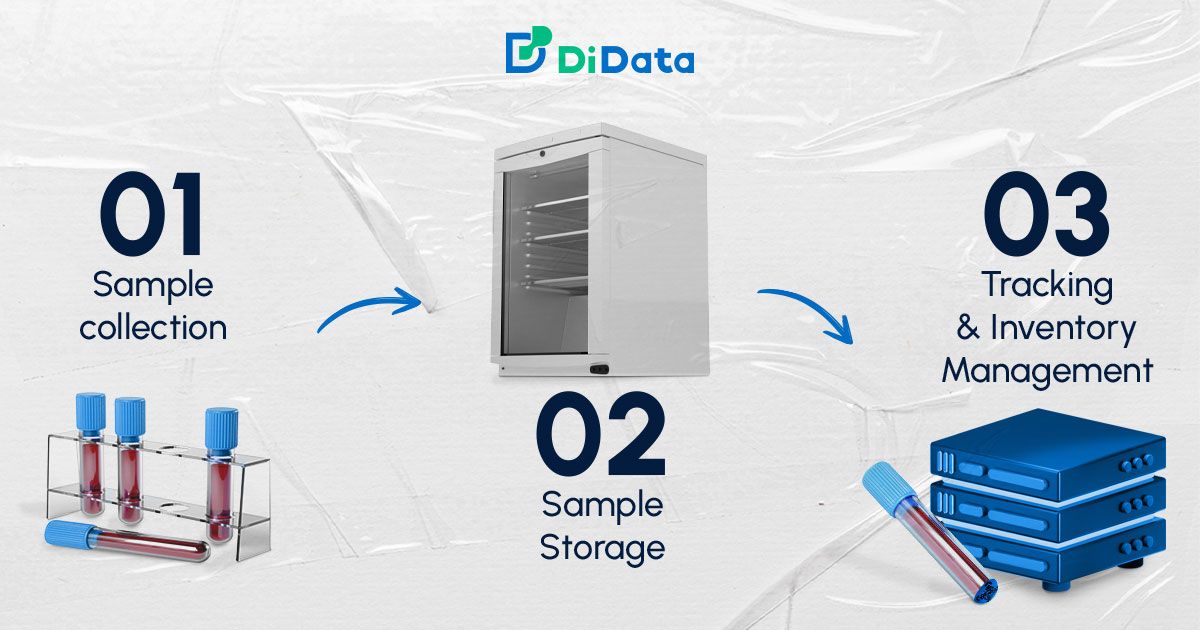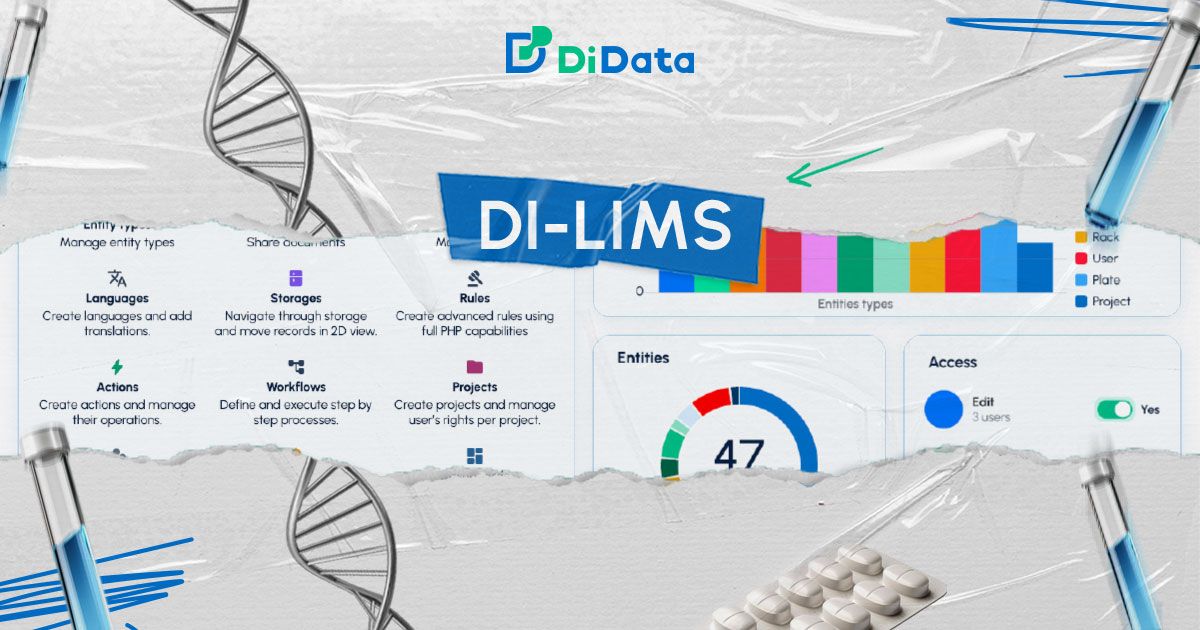What is sample management?
Sample management encompasses the entire lifecycle of a sample, from selection and collection to storage, analysis, and finally, disposal. It's essentially the behind-the-scenes hero ensuring the integrity and traceability of the materials used in your research.
Now, imagine the consequences of a poorly managed sample collection. Lost samples can derail entire projects, forcing you to restart from scratch. Inconsistent storage conditions might compromise the sample's quality, leading to inaccurate data and unreliable results. This can have significant repercussions in fields like:
- Pharmaceuticals: Compromised drug samples can lead to wasted resources in drug development and potentially harm patients in clinical trials.
- Environmental Science: Inaccurate environmental samples can lead to flawed assessments of pollution levels and hinder effective environmental protection strategies.
- Food Safety: Mishandled food samples can lead to inaccurate assessments of foodborne illnesses, putting consumers at risk.
These are just a few examples. The impact of poor sample management can be far-reaching and costly. In today’s article, we will talk about the most effective sample management practices, so you can ensure the quality and reliability of your research, ultimately saving time, resources, and potentially even lives.
Sample management in the lab: A brief history
Pre-1980s: The Pen and Paper Era
In that era, samples were identified with handwritten labels and data was painstakingly recorded in physical logbooks. This manual approach, while valiant, was prone to errors:
- Legibility issues: Handwritten labels could become smudged or illegible over time, leading to sample misidentification.
- Data Loss: Physical logbooks were susceptible to damage or loss, jeopardizing valuable research data.
- Inefficiency: Retrieving specific samples could be a time-consuming process, involving flipping through pages of logbooks.
The Rise of LIMS: The 1980s and Beyond
The late 1970s marked a turning point. The dawn of the computing revolution coincided with a growing need for better sample management solutions. Enter the Laboratory Information Management System (LIMS). These early LIMS were often custom-built solutions on minicomputers, but they offered a revolutionary leap forward:
- Centralized Data: Sample information and analysis data were stored electronically, eliminating the reliance on handwritten records.
- Automated Reporting: LIMS could generate reports and track trends in sample data, streamlining analysis.
- Improved Sample Tracking: Samples could be tracked electronically, making retrieval faster and more efficient.
The Modern Era: Continuous Evolution
The field of sample management continues to evolve. Today's LIMS are far more sophisticated, offering features like:
- Barcoding and RFID tags: For automated sample identification and tracking.
- Cloud-based solutions: Enabling remote access and collaboration.
- Integration with Lab Instruments: Streamlining data transfer and analysis.
As research becomes increasingly complex, sample management systems will continue to play a critical role in ensuring data integrity, efficient workflows, and ultimately, reliable scientific discoveries.
The Process of Sample Management

A. Sample Collection:
Sample collection is the very first step in the research process, and it sets the stage for everything that follows. Improper techniques at this stage can have a domino effect, jeopardizing the entire project. Let's explore why proper collection techniques and meticulous documentation are crucial for reliable results:
1. Importance of Proper Collection Techniques:
- Preserve Sample Integrity because different samples require specific collection methods to maintain their original state. For example, improper handling of a blood sample can alter its composition, leading to inaccurate analysis.
- Minimizing Contamination by Following appropriate hygiene protocols and using sterile equipment ensures pure samples.
- Ensuring Representativeness, for example, taking a soil sample from only the surface might not reflect the composition of deeper layers.
2. Documentation and Labeling:
- Traceability: Clear and detailed documentation allows you to track a sample throughout its lifecycle, from collection to disposal. This is vital for maintaining the chain of custody and ensuring data integrity.
- Accurate Analysis: Detailed labels with relevant information (sample type, collection site, date/time) are essential for proper analysis. Ambiguous labeling can lead to misinterpretation of data.
- Reproducibility: Thorough documentation allows others to understand how the sample was collected, enabling them to replicate the process for future studies or comparisons.
B. Storage: Safeguarding the Integrity of Your Samples
Once collected, samples become the cornerstone of your research. Proper storage is paramount to ensure their integrity and prevent degradation that could compromise your results.
1. Importance of Proper Storage Conditions:
- Maintaining Sample Stability: Different samples have specific stability requirements. For example, enzymes might lose their activity at room temperature, while DNA samples might degrade if exposed to excessive heat.
- Minimizing Chemical Reactions: Chemical reactions can alter a sample's composition. Maintaining appropriate storage conditions (e.g., light protection) minimizes unwanted reactions.
- Preventing Microbial Growth: Microbes like bacteria or mold can contaminate samples, leading to inaccurate analysis. Proper storage conditions like refrigeration or freezing can hinder microbial growth.
2. Different Storage Methods:
The ideal storage method depends on the type of sample and the desired preservation time:
- Room Temperature: Suitable for some stable samples like rocks or minerals.
- Refrigeration (4°C): Ideal for short-term storage of biological samples like tissues, blood, or cell cultures.
- Freezing (-20°C): Extends the shelf life of many biological samples compared to refrigeration.
- Ultra-Low Temperature Freezers (-80°C): For long-term storage of biological samples, especially those requiring minimal chemical activity like enzymes or proteins.
- Cryogenic Storage (-196°C and below): The ultimate long-term storage method, often used for cells or tissues intended for future viability studies.
Choosing the right storage method requires considering the sample type, desired storage duration, and potential impact of temperature fluctuations. Consulting with experts or referring to established storage guidelines for specific sample types is highly recommended.
C. Tracking and Inventory Management:
Effective tracking and inventory management prevent these headaches and ensure you know exactly what you have and where it is. Let's explore two key tools for achieving this:
1. Barcode Systems:
Barcodes are a game-changer for sample tracking. Think of them as tiny, scannable IDs for your samples. Barcode systems can help you with:
- Automated Identification: Scanning a barcode quickly retrieves all associated information about the sample, eliminating manual data entry errors.
- Improved Efficiency: Barcodes expedite sample retrieval and tracking throughout the research process.
- Reduced Risk of Errors: By relying on scannable data, barcodes minimize the risk of human error in sample identification.
2. Laboratory Information Management Systems (LIMS):
A LIMS is a software platform specifically designed to oversee and streamline laboratory operations. At its core, LIMS is a data management system, but its implications spread into inventory, workflow management, and regulatory compliance.
Modern LIMS like Di-LIMS not only digitize manual processes but also provide powerful analytics and reporting capabilities, here are some key features and benefits of LIMS for laboratory managers and research scientists:
- Blazing fast rendering with proven usability on large data sets: This means that DI-LIMS can handle large amounts of data quickly and easily, without sacrificing usability.
- Easy-to-use interface for samples and associated data: DI-LIMS has a user-friendly interface that makes it easy to manage samples and their associated data.
- Comprehensive audit trail for full compliance: The software keeps a complete record of all changes made to data, which helps to ensure compliance with regulations.
- Ability to connect to any instrument in your lab: DI-LIMS can connect to any instrument in your lab, which allows you to automate data transfer and analysis.
- Data transfer automation between instruments: it can automate the transfer of data between instruments, which can save you time and improve efficiency.
- Intuitive workflow editor: DI-LIMS has an intuitive workflow editor that allows you to create custom workflows for your specific needs.
- Ability to fully reproduce storage locations: allows you to fully reproduce storage locations, which can help to ensure the accuracy and consistency of your data.
- Quality management of samples: DI-LIMS can help you to manage the quality of your samples, which is important for ensuring the accuracy of your results.
- Access rights with multiple roles and permissions: The software allows you to set up different access rights for different users, which can help to improve security and compliance.
Conclusion:
The future of research and innovation is inextricably linked with the efficiency and reliability of sample management. LIMS has proven to be a game-changer for laboratories, offering unprecedented levels of control, precision, and data management capabilities.
For laboratory managers and research scientists seeking to remain at the vanguard of their fields, the adoption of LIMS is not just a competitive advantage but a necessity. By understanding the features, best practices, and future trends of LIMS technology, professionals can harness its full potential to propel their research forward and unlock new frontiers in biotechnology and beyond.
